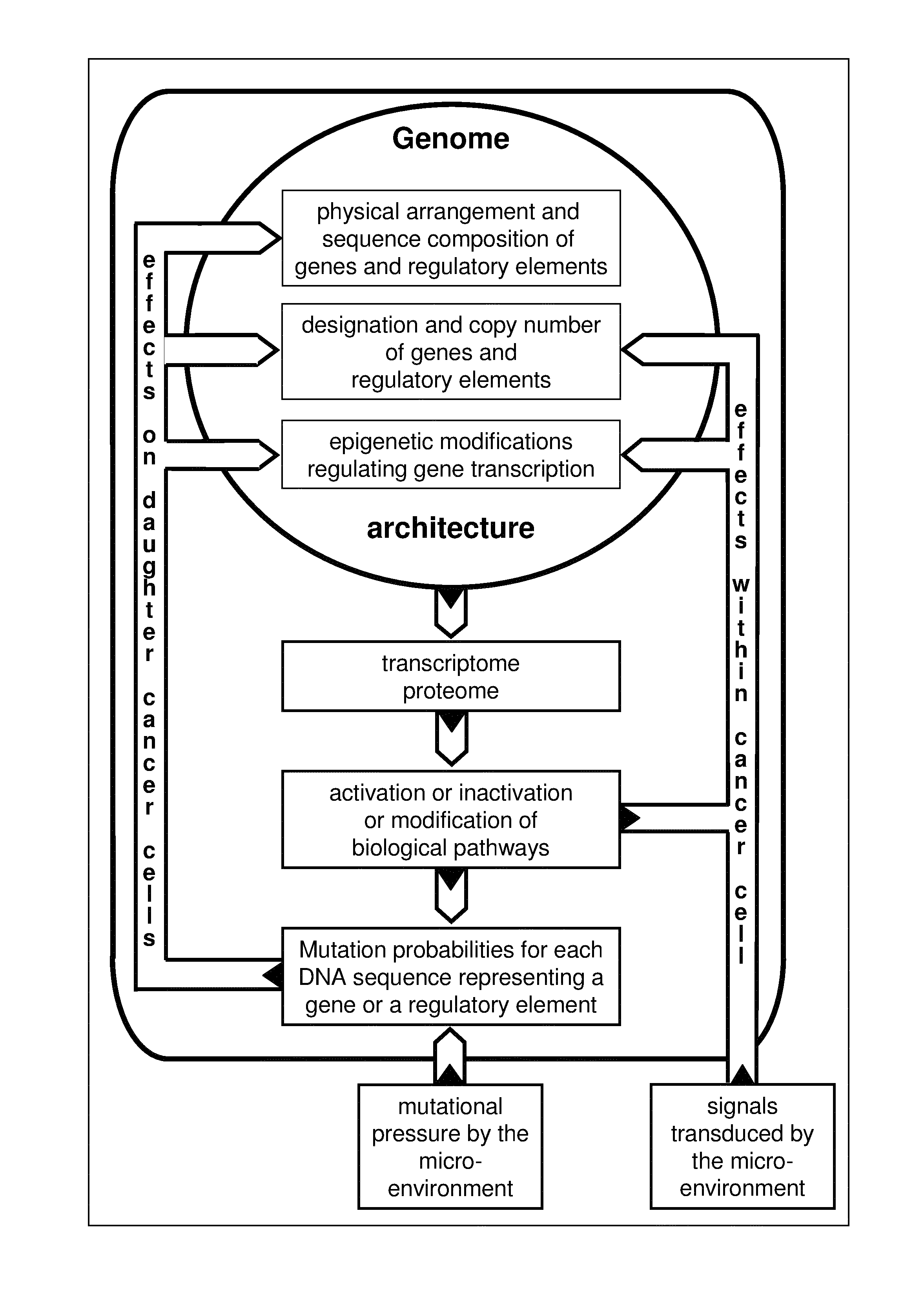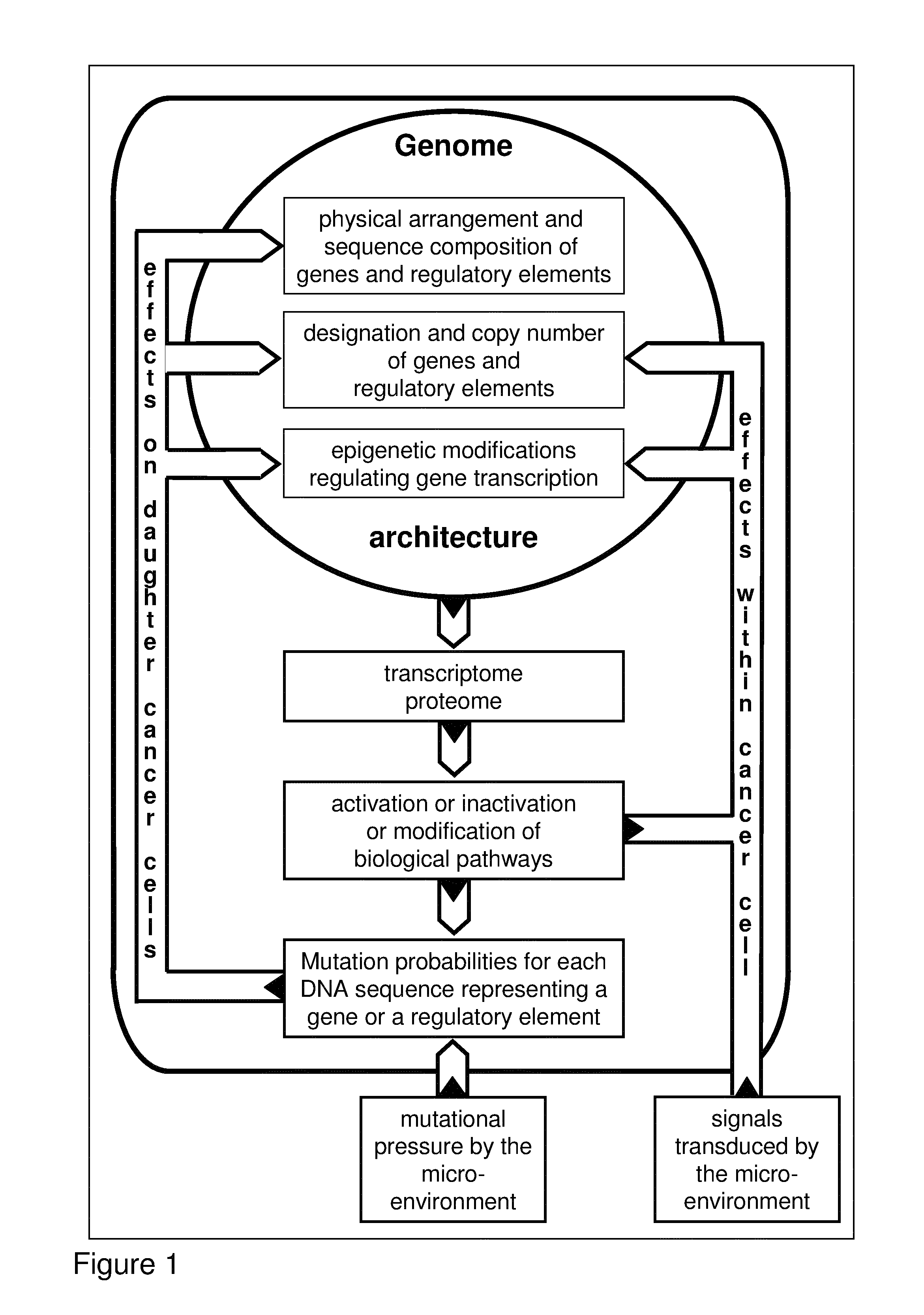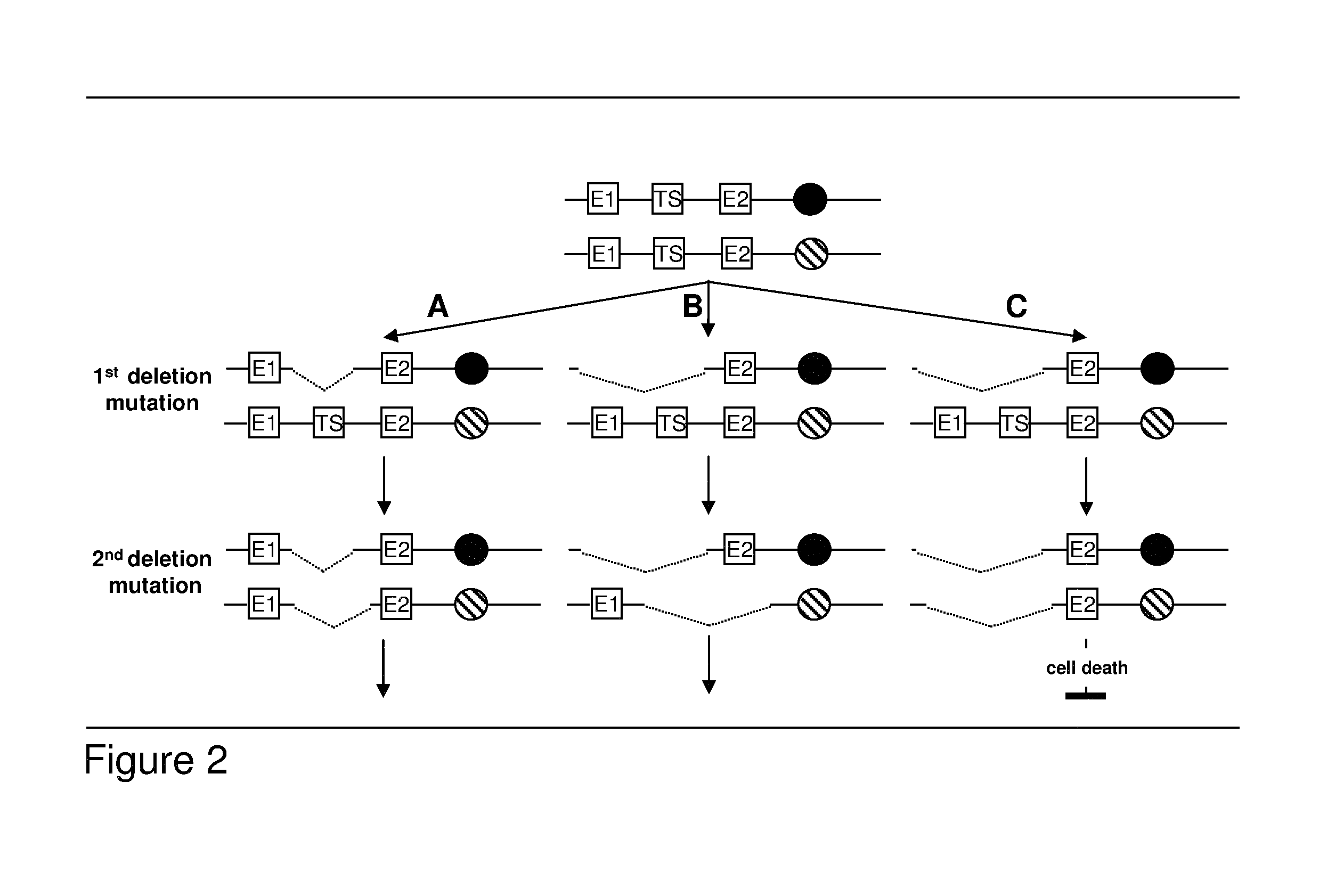Algorithm for modification of somatic cancer evolution
a somatic cancer and evolution technology, applied in the field of targeted cancer therapy, can solve problems such as differences in mutation frequency
- Summary
- Abstract
- Description
- Claims
- Application Information
AI Technical Summary
Benefits of technology
Problems solved by technology
Method used
Image
Examples
Embodiment Construction
Best Mode
[0126]The best mode of invention is described by the algorithm and by the accompanying FIG. 3.
INDUSTRIAL APPLICABILITY
[0127]The described algorithm allows the pharmaceutical industry to identify novel anti-cancer drugs when the algorithm is applied on multiple patients with the same cancer entity which enables identification of shared putative target genes or putative regulatory elements for cancer treatment.
[0128]The described algorithm allows health care industry to provide personalized treatment to cancer patients.
[0129]The described algorithm allows information technology industry to design and sell software applications which integrate the described algorithm into software programs which allow the prediction of the natural history of cancer disease in individual patients.
PUM
| Property | Measurement | Unit |
|---|---|---|
| mutation frequencies | aaaaa | aaaaa |
| chromosomal stability | aaaaa | aaaaa |
| physical | aaaaa | aaaaa |
Abstract
Description
Claims
Application Information
 Login to View More
Login to View More - R&D
- Intellectual Property
- Life Sciences
- Materials
- Tech Scout
- Unparalleled Data Quality
- Higher Quality Content
- 60% Fewer Hallucinations
Browse by: Latest US Patents, China's latest patents, Technical Efficacy Thesaurus, Application Domain, Technology Topic, Popular Technical Reports.
© 2025 PatSnap. All rights reserved.Legal|Privacy policy|Modern Slavery Act Transparency Statement|Sitemap|About US| Contact US: help@patsnap.com



